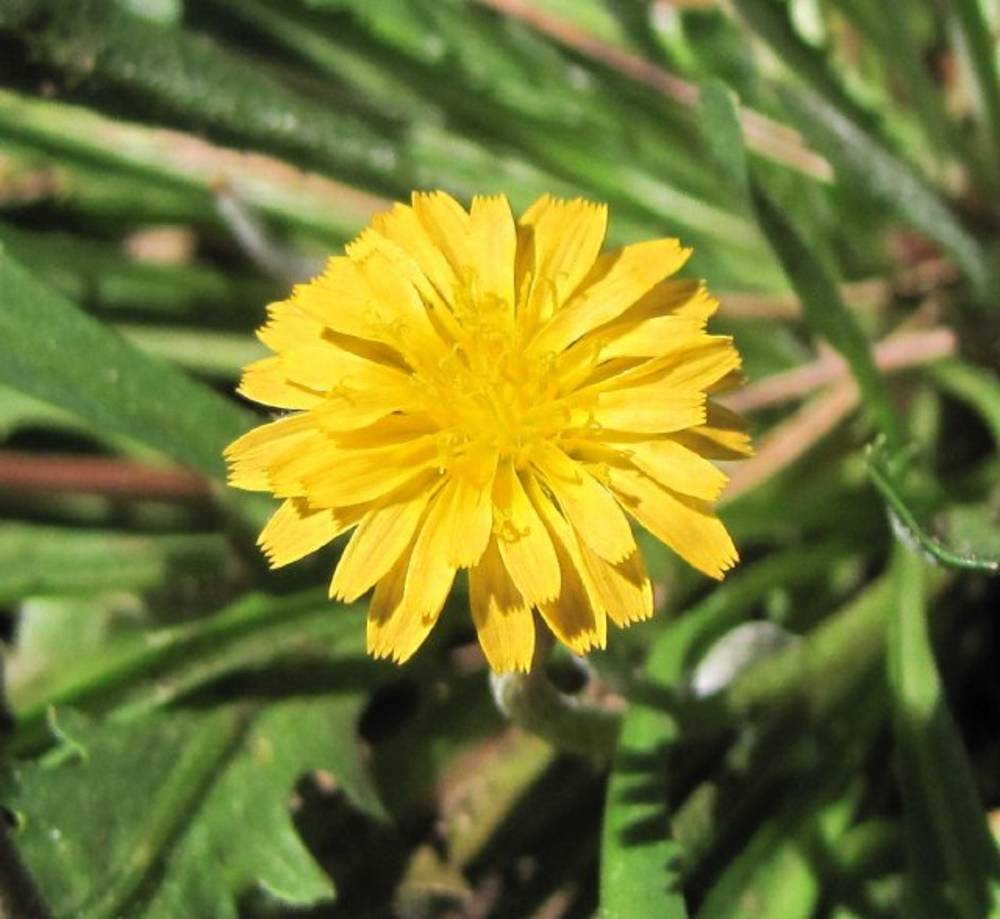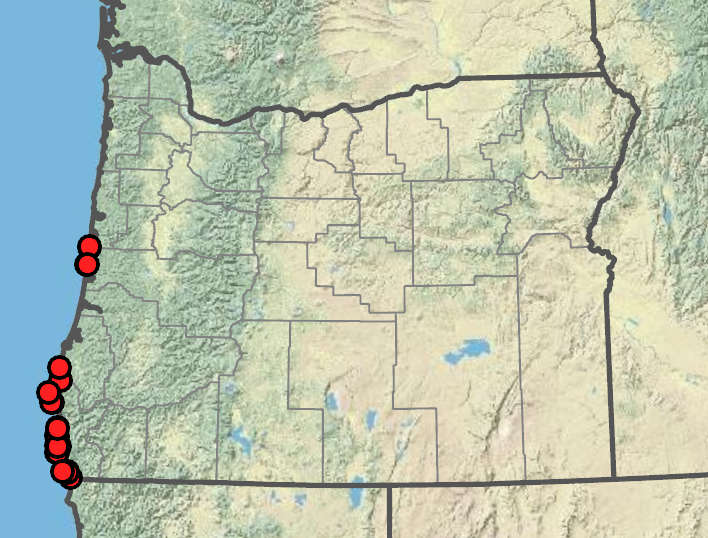Microseris paludosa
Microseris bigelovii
coastal microseris, coastal silver puffs
basal, 3–25 cm, linear to narrowly lanceolate or oblanceolate, bases tapering;
margins often pinnate with broad to linear lobes;
tips acuminate to bluntly rounded;
surfaces glabrous or mealy-pubescent.
leafless, mealy-pubescent.
5–14 mm, glabrous.
5–75;
ligules shorter than or slightly exceeding involucres, yellow.
in 2 unequal series, often purple-lined on midveins; inner equal, lanceolate;
tips acute or acuminate; outer deltoid-lanceolate; < inner.
2.5–5.5 mm, brown or purplish;
ribs smooth; outer white-hairy.
scales 5, lanceolate to ovate, 1–4 mm, brown to blackish; awns finely barbed.
=18.
Microseris paludosa
Microseris bigelovii
Sandy or rocky sites, dunes, coastal bluffs, bird-nesting islands. Flowering Apr–Jul. 0–100 m. Est. CA, WA; north to British Columbia. Native.
This is the only strictly coastal annual species of the genus. It is disjunct from Lincoln County to the southern tip of Vancouver Island, British Columbia, and adjacent San Juan Islands, Washington, probably due to long-range dispersal by birds. In parts of its range, it resembles Agoseris maritima in favoring coastal headlands and islands near seabird roosting sites.
Kenton Chambers
- Local floras:
BC,
CA,
OR,
WA
- Local Web sites:
CalFlora,
CalPhotos,
Flora NW,
PNW Herbaria
WildflowerSearch
iNaturalist (observations)
USDA Plants Database
- LBJ Wildflower Center
- SEINet
- Plants of the World Online
- Encyclopedia of Life
- Wikipedia
- Google Image Search



